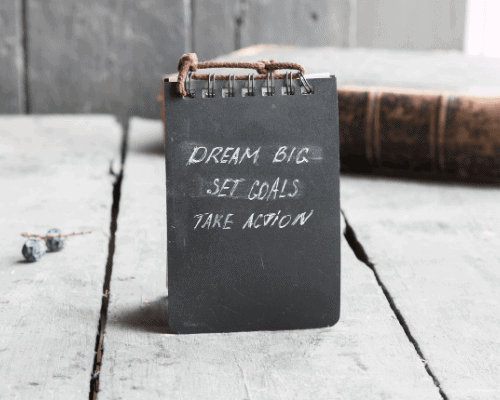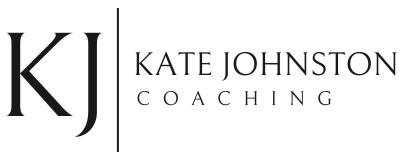How To Use Challenges To Reach Your Goals
Most people think of challenges as obstacles to reaching their goals. Therefore, they typically have difficulty reaching their goals because of this mindset. Challenges are crucial to helping you create results, and results are what you need to reach your goals.
In short, challenges help you reach your goals. Whether it be health goals, career goals, weight loss goals, fitness goals, you name it.
While on a run last week on a route that isn’t my usual one, I was coasting along at a comfortable pace. I was immersed in a podcast, enjoying the warm, but barely breaking a sweat.
I was brought out of my reverie when I remembered the cringe-worthy hill that was coming up. The hill itself is almost a mile long and very steep towards the top. It’s one of those hills that always slows your pace down considerably and makes your legs scream.
I groaned inwardly.
My brain said, “hey Kate, you can be miserable up this hill, or you can embrace it. You get to choose.” Embracing it seemed like the choice my brain wanted me to make.
As I was running the first half of the uphill, I realized why I decided to embrace it. The challenge of that hill was going to help me create the results that would bring me closer to my running goals for the season.
This got me thinking about how you can use challenges to help you reach your goals, and how you can create a habit of thinking positively about a challenge.
Here’s how.
Step 1 – Notice That Challenges and Goals are Intertwined
There are of course many variations on the definition of the word, “challenge.” The one I like the best is from the MacMillan Dictionary. It says that a challenge is “something that needs a lot of skill, energy, and determination to deal with or achieve.”
For the definition of the word, “goal,” there is less variation, but the one I like is from the Cambridge Dictionary. It defines a goal as “a purpose, or something that you want to achieve.”
The key word in both definitions is “achieve.” A challenge is something that you must take part in to reach an achievement, and a goal IS the actual achievement.
- Read this too: Habit Coaching: Create Your Results by Mastering Your Habits
- GET WEEKLY TIPS: Eating Habit and Weight Loss Tips
Step 2 – Understand How Challenges Create Results
For results to be created, there needs to be actions performed. Actions require at least some level of effort. Generally speaking, the more effort or action taken, the more likely results will occur.

When something is easy, that means there is little to no effort required. Therefore, something that is easy, is less likely to produce results.
Here’s an example.
Two women (let’s name them Krista and Carol) each set a goal of losing 10 lbs of body fat within the next 12 months.
Krista decides that the action she is going to take to accomplish this is to go to the gym for 45 minutes a day, but continue to eat takeout every night. At the gym, she plans on curling 5 lb dumbbells for 3 sets of 6, then do an easy walk on the treadmill for the remainder of the time.
Carol decides to go to the gym for 45 minutes a day as well, but learns how to lift heavier weights from a personal trainer. She gradually increases the weight she is lifting over time. She also starts making a habit of eating more vegetables and lean protein.
They both are taking at least one action toward their goal, but who do you think will be more likely to reach the goal in the time-period set?
Definitely Carol.
Step 3 – Learn How Challenges Encourage Problem-Solving
Chances are, any challenge you encounter on your way to your goal, may occur again. When you encounter a challenge, some level of problem-solving needs to occur.
Problem-solving needs to occur so that you can move past the challenge and not let it be a roadblock. If this challenge arises again along the way, you already have the solution and can succeed a second time.
Oftentimes, you also end up doing research, critically thinking, or even asking someone else for their expertise. You end up learning something new, which is always a great thing.

Step 4 – Make a Habit of Thinking of Challenges As Beneficial
Once you have realized the link between challenges and goals, you can start making a habit of looking at them differently. Additionally, once you discover how challenges create results and how they encourage future problem-solving, you can begin to really appreciate them.
Challenges are now seen as tools, rather than obstacles.
If you think of a challenge as a necessary tool to create a result and reach your goal, you will begin to have a surge of dopamine whenever you come across a challenge. Hey, you may even form a habit of wanting to accept challenges! (Hint hint, check out below.)
Here’s Why:
Dopamine is commonly known as the “pleasure hormone”. It is a neurotransmitter (a.k.a. hormone) that plays a large part in the pleasure we obtain from finding something we need. Back in the day, this was primarily used for things we needed to survive, such as food, water, shelter, warmth, etc.
It has now evolved to include anything we feel that we need to help us succeed in reaching any goal, not just survival.
Once we get that surge of dopamine when we find something we need, our brains tend to start looking for the next opportunity to experience this. Once dopamine has been released multiple times, it ends up resulting in a “re-wiring” of our brain, called neuroplasticity.
- Reference: Neuroscience News
Because of neuroplasticity, we can start to make a habit of recognizing challenges as a tool, rather than an obstacle. This creates a positive thought pattern rather than a negative one. It helps you to progress toward your goal, rather than be discouraged.
This is especially helpful when it comes to eating habits or weight loss, as many people struggle when they feel like they aren’t making progress. Negative thoughts can start to hinder results, which is why it’s so crucial to reframe how we look at challenges.
Final Step – Practice Positive Thoughts
The next time you encounter a challenge on your path to your goal, encourage a positive thought such as:
“I can use this to my advantage.”
“Action creates results.”
“This challenge is a bridge, not a wall.”
“I’m grateful for this opportunity.”
These thoughts will help produce a positive feeling, which in turn leads to action, which then creates our results.
So get out there and take on that steep hill, new job, healthier lifestyle, weight loss challenge, etc. You’ll be glad you did, and you’ll never look at a challenge the same way again.

KATE JOHNSTON
Eating Habits & Weight Loss Coach
Helping career women break free from emotional eating, overeating and mindless eating.
Start feeling more healthy, confident and free by booking a free consultation with me for a personalized plan.
